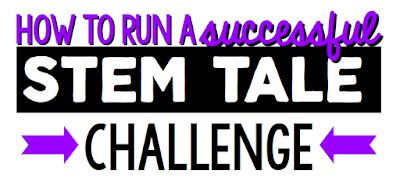Fairy Tale STEM Activity for Robin Hood
STEM and literacy are the PERFECT combo to get kids hooked on engineering! I have created a series of STEM fairy tale stories that take a beloved fairy tale and give it a STEM twist!
Robin Hood has gotten himself into a jam. He needs your students to help him design and create a new bow so he can win the archery competition and pay back the money he stole!
Materials Needed for this STEM Fairy Tale Activity
I may earn a small commission for my endorsement, recommendation, testimonial, and/or link to any products or services from this website. Your purchase helps support my work in bringing you downloads of value and information about educational resources. The link below is an Amazon affiliate link. You can read my full disclosure here.- string, twine, or balloons (for balloon animals, please be aware of latex allergies if using balloons)
- bamboo skewers, craft sticks, or plastic spoons
- duct tape (Gorilla tape is my go-to!)
- pencils or cotton swabs (for arrows)
Before Getting Started with the STEM Tale
STEM tales work best if you read the original fairy tale first or do your own storytelling. Discuss the similarities and differences as you read through the story. Another fun thing to do with this STEM tale in particular is to talk about various weapons used in warfare over the ages. One of my favorite book series for hands-on projects with kids is the Mini Weapons of Mass Destruction series:Once I checked out one of these books at my local library, I knew I had to have them all for our own library! They are fantastic as a reference as well, to help kids get ideas on how to use various objects in their designs.
Fairy Tale STEM with the Engineering Design Process
I have designed STEM tales so that as students read the story, they will follow the engineering design process. If you do multiple STEM tales, the process will become routine for your students and they will start using it when they solve other problems.Design a Bow for Robin Hood
After brainstorming design ideas for a bow, the students will then choose one to create. They will test out the bow with an arrow (either a pencil or a cotton swab). I prefer using a pencil, because the string grips nicely on the eraser. Please make sure all students start behind a line and only shoot in one direction, or you can construct a simple "shooting range" if you are concerned about injuries. The image above shows three varieties of bow - spoons, craft sticks, and a bamboo skewer, all with string. This is an example of how to load the arrow:Testing the Bow Design
Before testing, go over the ground rules several times. One violation and testing should immediately stop!- Bows can only be aimed at targets (use a printable target or simply stacked cups)
- Only shoot when the range is clear
- Retrieve arrows when instructed to do so
Growth Mindset and STEM
STEM tales are the perfect way to model a growth mindset. It is rare for an engineering design to work perfectly on the first attempt, so students will likely experience failure at some point. In improving the designs and working together, they will work through the issues and solve the problem. In this challenge, I provided long balloons and most of the kids wanted to try them out (what kid doesn't love a balloon?). What they learned is that the balloons stretch too much and the arrow doesn't fly as well as with a string.Optional - Prepare the Bow Ahead of Time
The instructions for these bows are in the Mini Weapons book. The craft sticks are soaked in water so they are easier to bend, then you set them into the shape and let dry overnight:This is a good option if you want to keep variability low. You can then Have the students try various rubber bands or strings.
To find the full resource, which includes an 8-page booklet, check list for self-evaluation, and tips, plus 3 bonus STEM challenges, visit this link:
Pin the idea for later:
To read more about how to conduct a STEM challenge, visit this post:
To see all posts in this series, click here:



















No comments:
Post a Comment